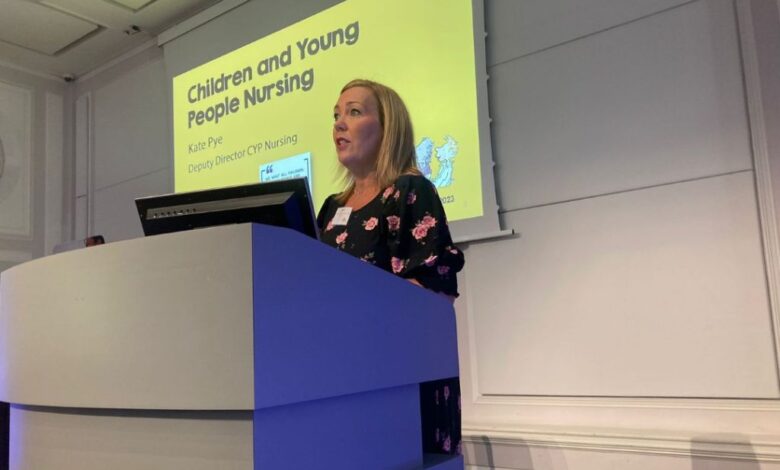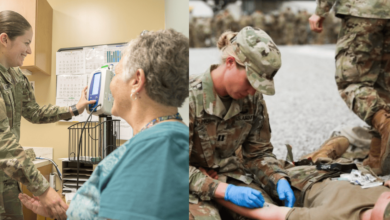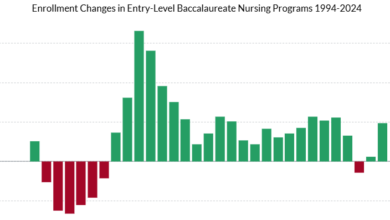More children’s nurses and beds needed, says NHS leader

NHS England’s deputy director for children and young people’s nursing has outlined the challenges facing the specialty and what needs to be done to address them.
Kate Pye spoke at the Roald Dahl Nurses Conference in London today about her team’s priorities and the state of children’s healthcare more broadly.
“It doesn’t take much to tip services over”
Kate Pye
The event, run by Roald Dahl’s Marvellous Children’s Charity, brought together specialist children and young people nurses whose positions are sponsored by the charity.
Ms Pye described the increase in demand for children and young people’s nursing services.
She pointed to a rise in the number of children with complex needs, a more than doubling of children on ventilation at home since 2013, and an increase in the number of disabled children requiring nursing care.
Ms Pye also said that admissions for mental health in young people were on the rise, in particular the 17-19-year-old age range, and how this has had a “massive impact” on the workforce. As, she added, had an increase in child mortality and self-referrals of children to A&E.
“We’ve also done a lot of reflection on the huge impact the pandemic had on children and young people’s nursing,” she said.
“The unintended consequences have been far reaching,” Ms Pye added.
She further highlighted increases in obesity, domestic abuse, asthma, poverty and seasonal pressures impacting children, young people and families.
Ms Pye pointed to a 3,000-strong children’s nurses vacancy, and acknowledged that many people in the specialty were “upset” that this gap was not addressed in detail in the NHS workforce plan. She said she was working with the director of the plan to investigate ways to address it.
“We need to make sure we have enough of a pipeline, that we are able to support children in all settings,” she said.
Ms Pye pointed to regional variances in the training and workforce gaps: in the South East of England, there is a vacancy rate of 15%, compared to 3% in the North West.
She continued: “There is such a massive regional variance. We train more children’s nurses in the North, but there are more gaps in the South.”
Ms Pye said her office waws seeking to increase recruitment and training, and investigate why the attrition rate in children’s nursing students had risen recently.
The senior nurse said, as well as the workforce itself, the healthcare infrastructure for children and young people needed improving.
She said that, in England, there were three hospital beds per 100,000 children; by comparison, Switzerland has seven.
“It doesn’t take much to tip services over, and we see it all the time,” she told the conference.
“We have very little capacity.”
To address this, Ms Pye said she hoped a medium-term strategy, due soon, would look at increasing this bed capacity.
She also mentioned the impact of the Lucy Letby case on the children’s nursing workforce.
“It’s been a difficult time for children and young people’s nurses,” she said.
“I think all nurses at the moment are shaken,” she added.
“And maybe [they are] questioning processes or how they would have approached the scenario and [questioning] escalation.”
Looking ahead, Ms Pye said the issues she had raised at the conference were all priorities for her office, as well as running and expanding a children’s nursing leadership programme, digitisation and implementing new standards which could help nurses benchmark their workplaces.
She told Nursing Times: “From a nursing perspective, it’s about us trying to ensure we have an adequate workforce that we can support, with additional roles, nurse specialists, advanced nursing practitioners, and with some of the virtual ward work going on.
“Making sure we are supporting and developing those roles for children’s nurses.
“I’ve talked a lot about complexity and the number of children we now have on long-term ventilation, and those transitioning into adult care with lifelong needs, and how we support parents and families in that space.
“One thing I’m excited about is […] the children’s nursing leadership programme.”
She added that she wanted to encourage more children’s nurses to be “brave” and take the step to become leaders in the profession.
More from the Roald Dahl Nurses Conference 2023






